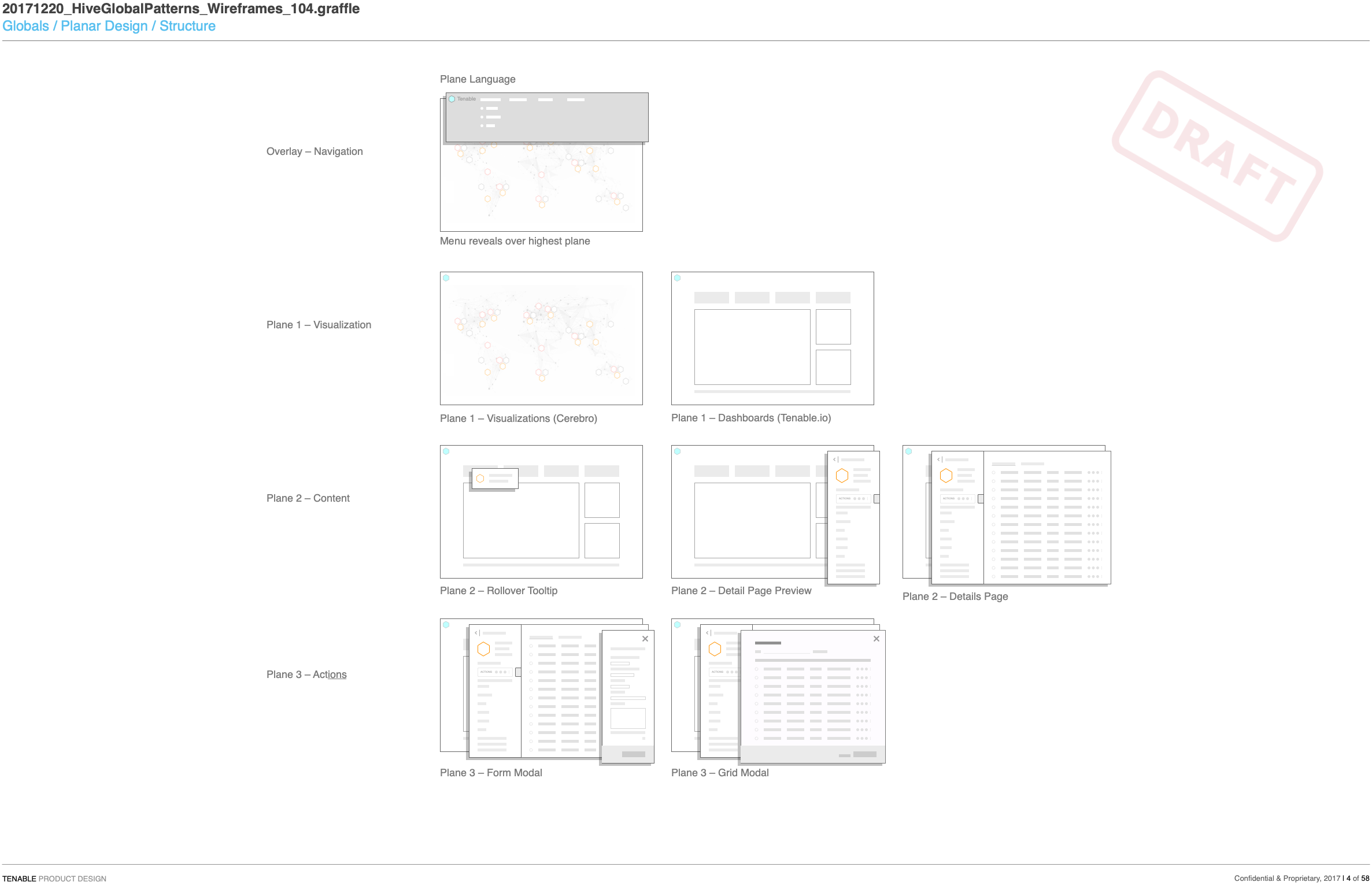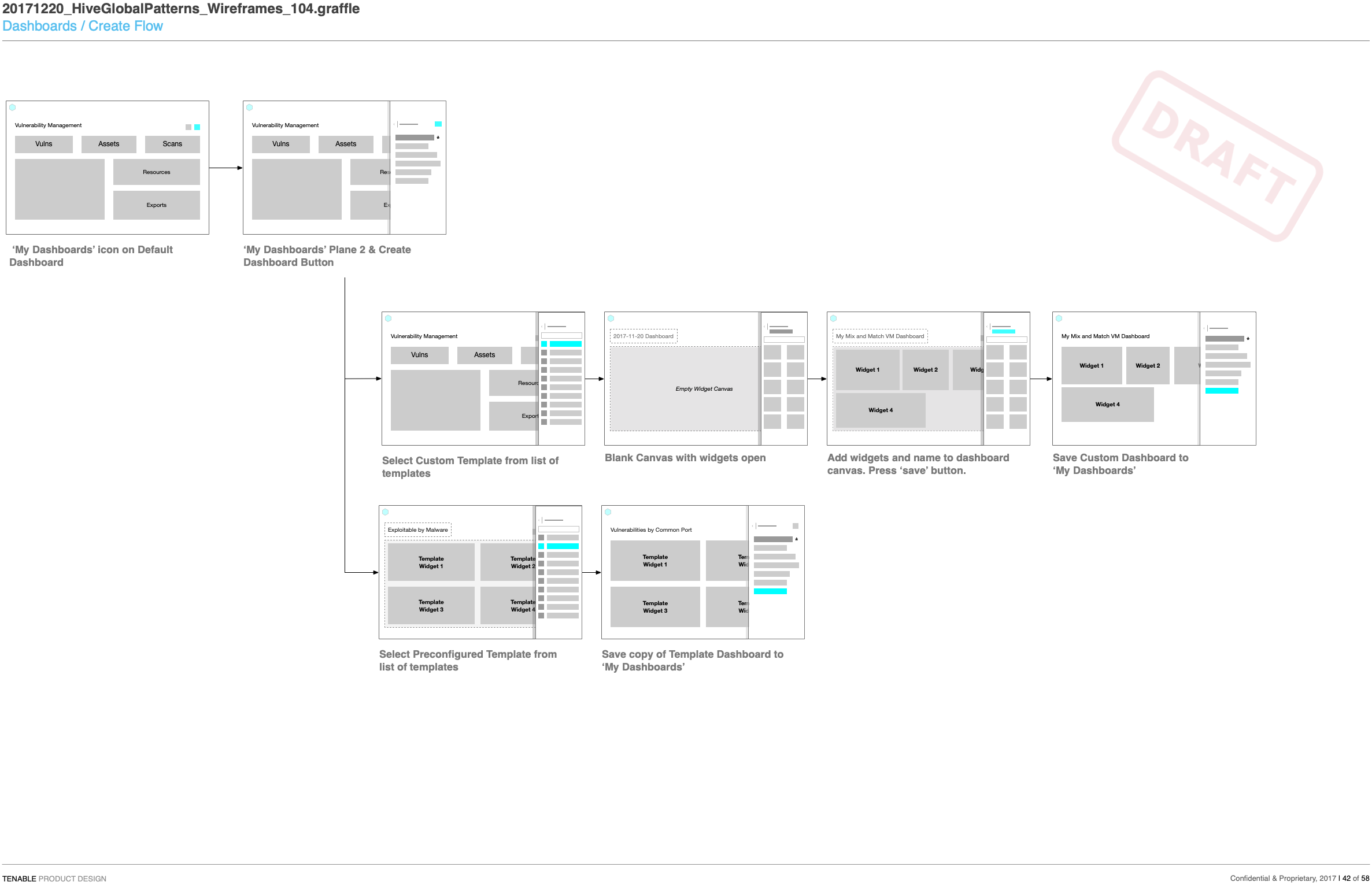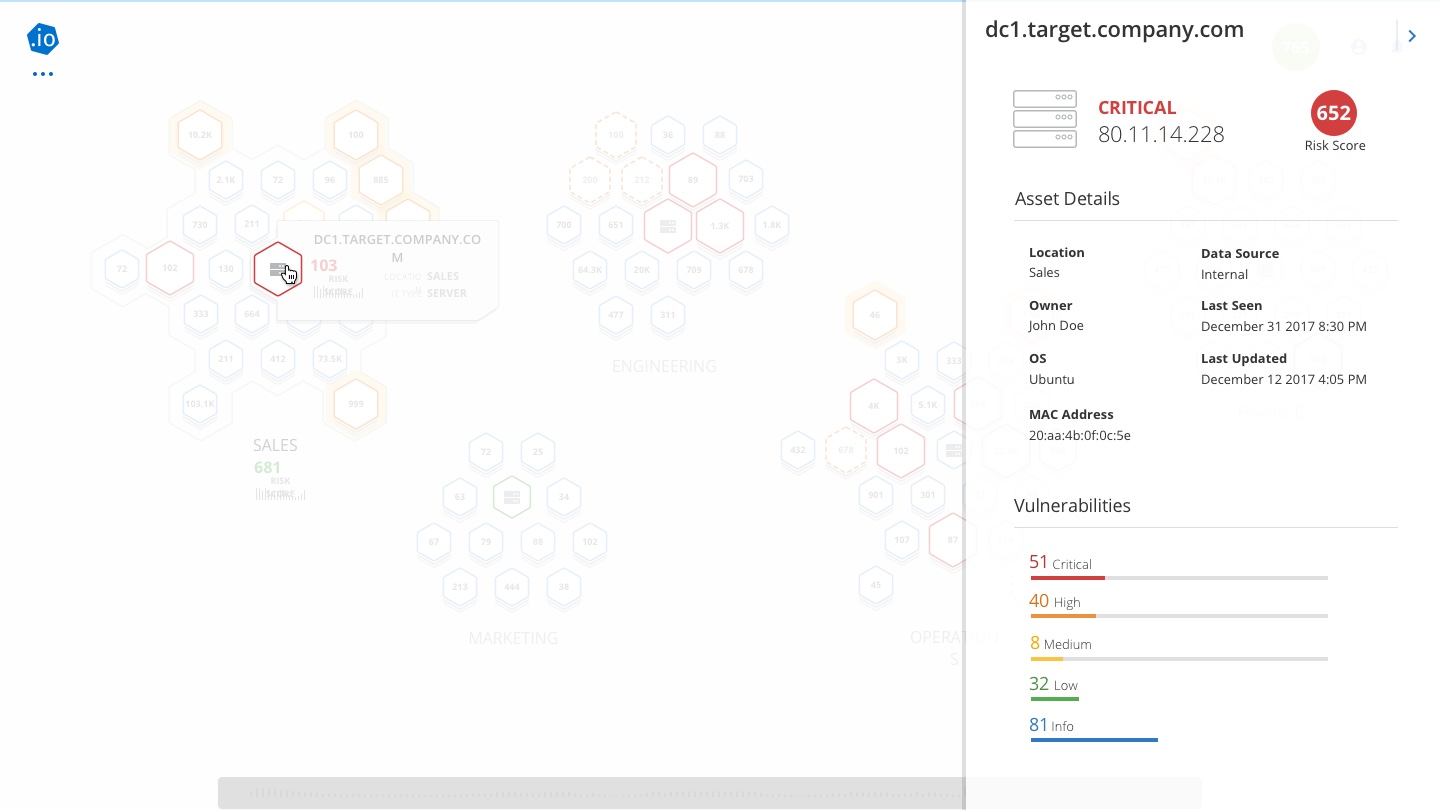Transforming Tenable's user experience for enterprise security teams
Senior product designer, 2016 — 2018
In 2016 I joined Tenable as a senior product designer to help the design team concept, design, and ultimately build the next generation of Tenable Security products. Tenable Network Security is a leading provider of cybersecurity products in the enterprise space. My work mainly focused on rethinking and redesigning interactions within these products to simplify vulnerability management and improve efficiency for security teams.
Tackling the challenges of visualizing complex security data
Tenable faced a big challenge in visualizing the vast amounts of data generated from cloud based security software. This data, often complex and detailed, requires tools that can prioritize critical vulnerabilities while filtering out less relevant information. Real-time visualization is very important for immediate threat detection. Also, these visualizations have to balance technical detail with usability, allowing both experts and non-experts to interpret the data.
Collaborating with key customers to inform design
The product design team at Tenable conducted research by focusing on the needs of its large clients, performing in-depth studies of network environments, and collaborating closely with security teams. We partnered with these teams through partnerships, surveys, and interviews to understand specific challenges related to network complexity, threat landscapes, and compliance requirements. Consistently, we heard that teams' biggest challenge was analyzing and prioritizing their vast amounts of data quickly and easily.
Creating a new user experience for managing large sets of intricate security data
To address the challenge of visualizing large amounts of data, the Tenable team recognized the need for a new approach that would allow users to seamlessly zoom in and out of complex datasets. Traditional methods of data navigation were insufficient, especially when dealing with the scale and depth of information generated by network scans. The team began exploring novel solutions within their cloud-based software to provide users with greater flexibility and control over data exploration.

In the spring of 2018, the Tenable design team gathered for a week in Washington, D.C., to lay the groundwork for a reimagined network management product codenamed "Cerebro"

Structure wireframes

Navigation pattern wireframes

Flow diagrams for creation flow
I worked inside the design team specifically on wireframes and documentation so we could establish foundational concepts and design patterns that would shape this system. The result was the “Hive Planar System,” a UI design that used overlapping panels to let users drill into specific details without losing their place in the broader data context.
How to transform sophisticated cybersecurity data with a visual, intuitive user experience

A key challenge was making an unconventional design pattern usable for a broad range of cybersecurity users. Many customers were used to large lists and tables of vulnerability data, which, while familiar, became overwhelming as data grew. The team aimed to introduce a more visual and interactive experience that would allow users to scan, investigate, and act on vulnerabilities more efficiently.

The goal was to help users quickly identify patterns and insights, making it easier to dive into specific vulnerabilities, assess severity, and respond faster. The challenge was ensuring this new approach catered to both technical experts and less specialized users, offering a seamless transition from traditional data-heavy formats to a more intuitive, dynamic system that reduced cognitive load without sacrificing efficiency or accuracy.
Understanding the complexities of network security
At Tenable, I designed new product features that helped to gain major enterprise clients including Siemens and Cargill. Working to serve these large organizations also deepened my understanding of network security and vulnerability management at scale.
Additional Work
About
A multidisciplinary designer based in Nashville who is passionate about solving hard problems with human centered design. Read more.











